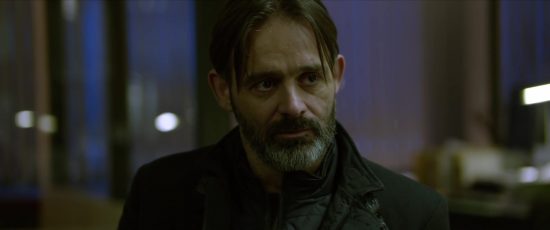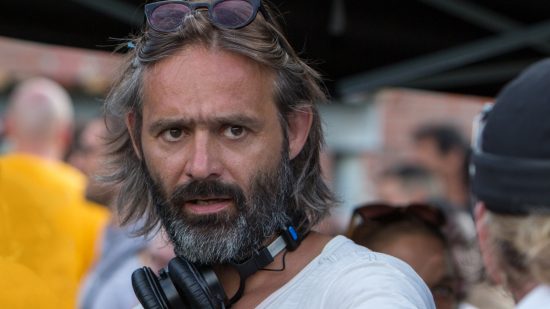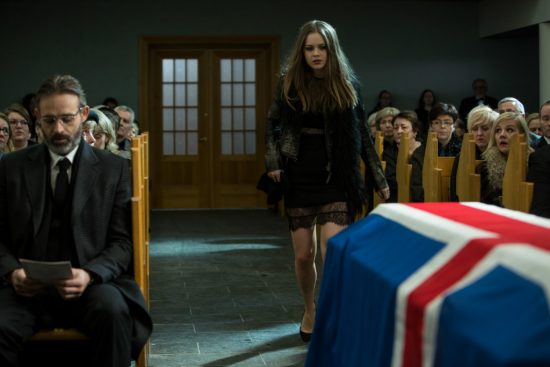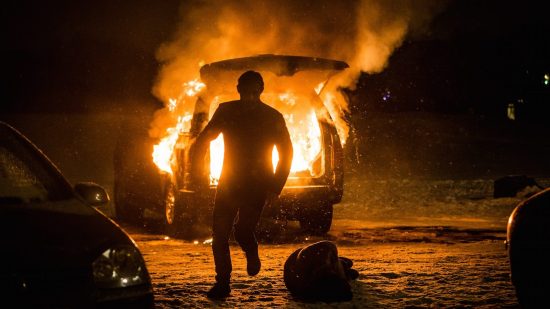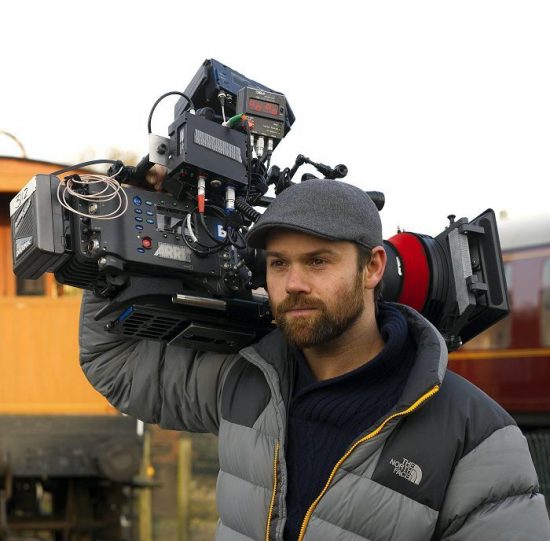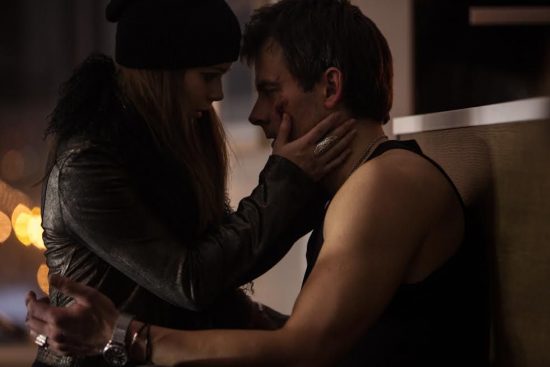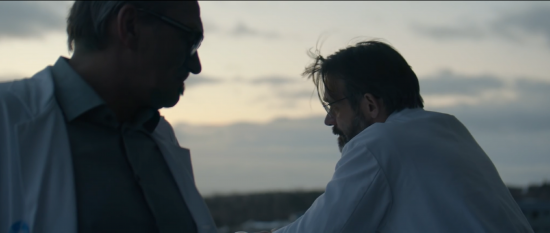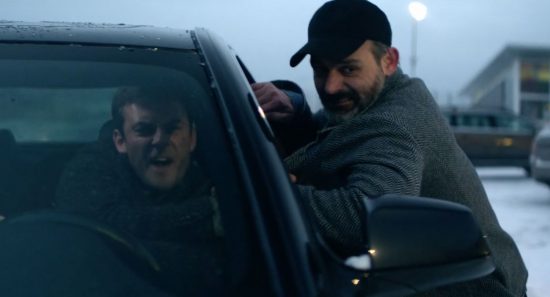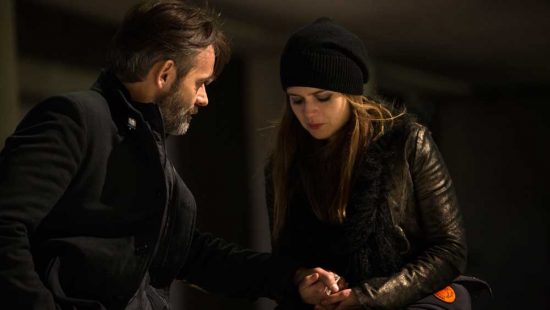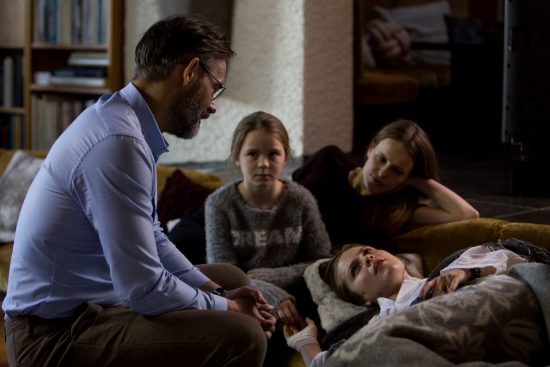Homeward Bound: The Making of The Oath
Trevor Hogg chats with filmmaker Baltasar Kormákur and cinematographer Óttar Guðnason about their reunion and producing a personal Icelandic thriller called The Oath…
A graduate from Iceland’s Academy of Fine Arts, Baltasar Kormákur fulfilled his ambition of an acting career by performing for the National Theatre of Iceland as well in movies such as Agnes. Nowadays, the native of Reykjavík, Iceland has been more focused being behind not in front of the camera directing Hollywood productions 2 Guns, Contraband and Everest. The release of The Oath marked the return of Kormákur to his homeland and to the profession he trained for after an eight-year absence. “I did it for my first film 101 Reykjavík for financial reasons because I was one of the best-known screen actors in Iceland at the time,” states Kormákur. “Often, I have been asked by producers, ‘Why don’t you play a part?’ But it doesn’t appeal to me. In the early stages of The Oath there was something about the character and story that I felt confident stepping into the role of Finnur. You surround yourself with good people who point out things to you and are honest.” The crime drama thriller revolves around a brilliant surgeon driven to extreme methods to save his daughter from her drug dealer boyfriend. “My best friend had a similar situation with his daughter and ended up taking a shotgun to a dope den with all of the guys. Fortunately, he didn’t have to use it.”
“It was important to tell the story from the perspective of a regular man whose life starts to fall apart,” remarks Kormákur. “He risks everything and loses everything. I wanted an open ending. You can judge yourself his actions.” The conflict escalates for Finnur. “If you pay the boyfriend three million dollars he comes back asking for six million. This guy is never going to let go. Finnur is a controller. When do you let go? He’s not a mastermind in killing or abducting people. There’s a mistake in the surgery because Finnur is nervous. Now you have to deal with the parents and the hospital. His wife is frustrated and the younger daughter is forgotten.” Exposition was incorporated into the setting such as the house of the deceased father of Finnur being the place where his abductee is kept. “I didn’t want to go to flashbacks. The drug dealer brings it up because he has heard some things from the daughter. That’s another thing. You’re a private person and suddenly this drug dealer knows everything about your issues. It’s coming from every corner. It’s a breakdown of this man.”
Several actresses auditioned for the pivotal role of Anna. “When Hera Hilmar came along it was no question for me,” states Kormákur. It is about the relationship between father and daughter so I had to take out some of the scenes with Finnur’s wife and younger daughter. It’s important that you feel that there’s this bond in the beginning. It’s not a perfect relationship. They are both trying. Then the movie starts pulling them apart and the father is trying to keep her in. It was important those scenes. Playing those scenes with Hera were satisfying.” Kormákur and Hilmar accompanied by a small cast that includes Gísli Örn Garðarsson, Ingvar Eggert Sigurðsson, Þorsteinn Bachmann and Margrét Bjarnadóttir. The drug dealer boyfriend [Gísli Örn Garðarsson] had to be appealing to the girl not only a creep. You judge Óttar early and then you see there is a human being there. Óttar and Anna are actually in love and that makes it’s harder for Finnur. It’s two people with broken wings trying to fly.”
“It was a long time since Óttar Guðnason [The Numbers Station] and I worked together,” notes Kormákur. “Óttar is a talented DP. We had a long time of discussing it before we went into production. We wanted to make it organic not forced visually. Find a simple way to tell the story in as few shots as possible and not have the camera jumping around. The same thing with the story, have it organically building up. A lot of thrillers shoehorn in bad things so you can develop the story.” Multiple cameras were not used for The Oath. “Early on, we decided to capture the footage with a single camera,” reveals Guðnason. “I am happy we made that decision, as I feel it just makes the movie much more pleasant, and allowed us to only light one camera properly at a time.” There were no storyboards. Due to various reasons, we only managed to get three consecutive weeks of prep. We did breakdown some of the key scenes, and made our shot list by photographing ourselves through the scenes while the actors were rehearsing.”
ARRI ALEXA cameras were provided by Kukl as well as grip and lighting equipment. “A few months before principle photography, I was fortunate to test new some anamorphic lenses from Scorpio/Servicevision in Spain,” remarks Guðnason. “I very much liked them, and we reached out to them to supply us with their new lenses. Luckily, they responded positively and managed to give us four lenses. It was quite limited to only have the four focal lengths, but we fell in love with the image quality and decided to make it work. We also had an anamorphic converted Angénieux zoom as well as a high quality 2x extender.” The majority of the footage was full anamorphic with the 4:3 ARRI ALEXA sensor. “There is a small scene which we captured spherical and used different classic ARRI Master Primes.” Key crew members included 1st AC Goði Már Guðbjörnsson, key grip Arnar Lava Einarsson, and gaffer Finnur Þór Guðjónsson. “The film was not covered in term of angles. We only captured what was needed to tell the story. The Oath is around 1000 shots, which is not much.”
Principal photography took placed between December 2015 to February 2016 for a total of 51 shooting days. Early on, we fell a bit behind schedule due to the fact Baltasar was both directing, acting and producing,” states Óttar Guðnason. “That workflow simply takes more time and was the main reason for the added days. The movie was entirely shot in and outside of Reykjavík.” A lot of time was spent location scouting with Baltasar Kormákur seeking a Nordic style to the imagery. “Our location challenge was the medical aspect of the movie, and we shot more than 15 days in various hospitals in Iceland where you have to respect and follow their policies,” observes Guðnason. The location which I find stands out the most is the private house that belongs to the lead character in the movie. It´s a mid-century concrete house designed by one of my favorite designers, Högna. It´s almost a bunker-looking concrete house with great windows and forms and shapes. It was such a pleasure lensing up at that house, and it gave us so many great options and visuals.” A dramatic aerial shot pans down to Finnur riding bicycle on lonely long stretch of road. “In my country there is endless space,” notes Kormákur. “The landscape emphasizes how small and powerless we are.”
The lack of daylight which amounted to five hours day was difficult along with a certain holiday decoration. “During the winter Icelanders tend to decorate their houses with endless Christmas lights,” explains Guðnason. “We had to ask a lot of neighbors to turn them off and the rest were removed in post. The solution was the light sensitive ARRI ALEXA as well as the fast speed anamorphic lenses from Scorpio. A big help was the shooting schedule which was carefully put together by 1st AD Harpa Þórisdóttir. It was quite a challenge since we needed a lot of weather covers. During our 11 hours days we had to start most of the days in darkness and shoot interiors, then move out for day exterior and then back in for more interior and night scenes. Definitely not recommended from 1st AD´s!”
Visual effects shots were kept to a minimum. “We had some sky replacements, Christmas lights removals, and a couple of set extensions,” reveals Guðnason. “In terms of special effects, we had a lot of special effect and prosthetic make up. There are three heart surgeries in the movie and a Danish prosthetic artist brought in hearts, body parts, blood and all kind of stuff to make it look believable. These scenes were supervised by Heimir Sverrisson [production designer], a special effect artist, and Icelandic lead heart surgeon, Tómas Guðbjartsson. These three guys made these scenes super real and fun to capture. It´s an one to one copy of heart surgeries and we used professional medical staff for actors and support; they all felt these scenes looked accurate, believable, and true.” The color pallet consisted of earthy and muted tones. “The grading took place in both New York City and Los Angeles with Company 3 and their well-known senior colorist, Stephan Sonnenfeld. Stephan brought a lot to the table and supported what Baltasar and I were after; he is the quickest colourist I have seen working and his taste level is amazing.”
Suspense needed to build gradually. “Slowly you try to find the pace that the film wants to be at,” notes Kormákur. “You don’t want to force it and chop it up. Hopefully it starts to tighten the grip on the audience, then you let it go and grip them again. I didn’t want to use tricks of shocking people. Like a cat jumping at you. The more that you are in his perspective the more claustrophobic it becomes. What is he going to do? Where is the film heading? Deliberate but tight. You don’t want to fall into the melodrama.” There are no reaction shots. “I wanted to make it organically flow but at the same time be visual.” Tone is discovered through rehearsals, discussions and the set. “You build a world. I gave myself good time to do that. I wasn’t in a hurry.” Evil lives within an individual. “Pushed into a corner Finnur is probably more dangerous than Óttar.” Intuition guides the decision-making process. “What’s the point of going somewhere if the journey isn’t interesting? I look for interesting projects. Something that I can connect to.”
Many thanks to Baltasar Kormákur and Óttar Guðnason for taking the time to be interviewed and for more information visit the official website for The Oath.
Trevor Hogg is a freelance video editor and writer who currently resides in Canada; he can be found at LinkedIn.
Next PostPrevious Post(adsbygoogle = window.adsbygoogle || []).push({});

